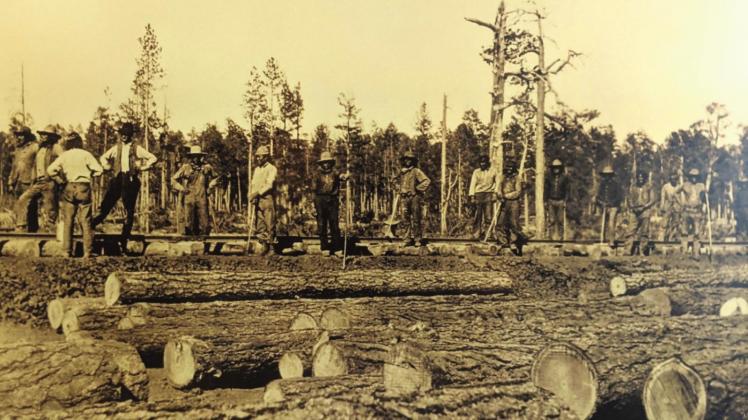GRANTS, N.M. – The city of Grants originated when three Canadian brothers were awarded a contract to build a section of railroad line.
The city, which later became the seat of Cibola County government, began as a railroad camp in the 1880s when Angus A. Grant, John R. Grant, and Lewis A. Grant were awarded a contract to build a section of the Atlantic and Pacific Railroad through the region. The settlement was first called Grants Camp, then Grants Station, and finally Grants.
The growing encampment eventually enveloped the existing colonial New Mexican settlement of Los Alamitos. The city of Grants grew along the tracks of the Atlantic and Pacific Railroad acknowledged Robert Gallegos, Double Six Gallery executive director.
The city served as a section point for the Atlantic and Pacific, which became part of the Atchison, Topeka, and Santa Fe Railway. The Zuni Mountain Railroad short line tracks had a roundhouse in Grants and workers were housed in a small community named Breecetown on the western edge of town. Timber was shipped to Albuquerque where a large sawmill converted the raw materials to wood products that were sold around the West, according to local lore.
“Logging started after the railroad came to Grants,” said the gallery director who added that the local industry flourished for approximately 50 years from 1890-1941.
Recently Grants Public Library, 1101 N. First St., Grants, was the recipient of a display that featured this area’s logging industry. The art gallery donated eight pieces to the library explained Gallegos, who serves on the five-member advisory board that represents Cibola County, Village of Milan, and City of Grants residents.
The framed pieces illustrate the history of the railroad in the Zuni Mountains. The project was a collaborative endeavor between the Cibola Arts Council, Double Six Gallery, and the U.S. Forest Service. Gallegos recalled that previously the full exhibit was on display in the gallery’s museum.
The Double Six Gallery, on Historic Route 66 in downtown Grants, displays works by area artists and offers visitors seating in an outdoor garden along with The Cibola Art and Artifacts Museum, which profiles regional history. Three earlier exhibits featured Chaco Canyon, Homesteaders, and Zuni Mountain Railroad Logging - 1890-1941.
The latter graced the halls of the Cibola County building on High Street until recently. Gallegos noted that county officials had not expressed any interest in moving the logging display to the new building when county offices relocated to the Roosevelt Avenue facility several years ago.
Pieces of the logging exhibit have since been shared with the New Mexico Mining Museum and the Cibola County Historical Society; eight photographs given to the library so that the legacy could be shared with more people explained Gallegos.
The library staff had initially planned a much larger, three-dimensional display that would feature a replica of Historic Route 66 through downtown. The original idea included using the 3-D printer to make miniatures of the more notable buildings, the BNSF tracks, and plans included adding replicas of vintage cars and trucks.
“After researching (the concept) we realized that we do not have the knowledge, skill, or funds to move forward with the (original) train display,” recalled Nadine Jiron, library director.
Portions of the logging display have been placed in the windows of the Young Adult section, which is in the front of the library and faces the indoor courtyard.
Jiron said they chose that specific section of the building “in hopes that it will attract patrons’ attention as they enter the building but also to hopefully pique our youth’s interest in our local history.”
“Now those eight framed pieces of the original exhibit are out where community members can see them,” agreed Gallegos and added that the railroad legacy continues even though the Zuni Mountains logging industry has ceased to exist.
The gallery director commented on efforts by numerous volunteers to refurbish the Burlington, Northern, Santa Fe Railroad caboose, which sits on Santa Fe Avenue across from the mining museum/chamber building on Iron Street in downtown Grants. He recalled that the caboose had sat on the BNSF siding for years and was “in really rough shape” before the restoration.
Now it attracts visitors to the downtown area he said.
Visit cityofgrants.net/library or http://www.cibolaartscouncil.com for more information.

